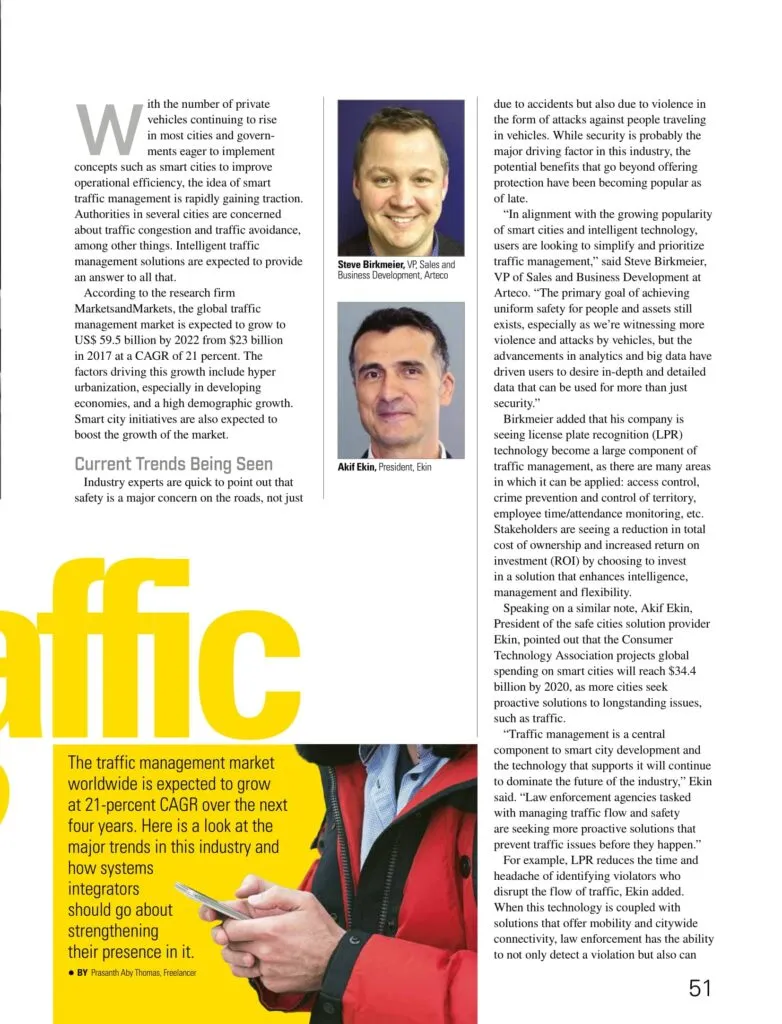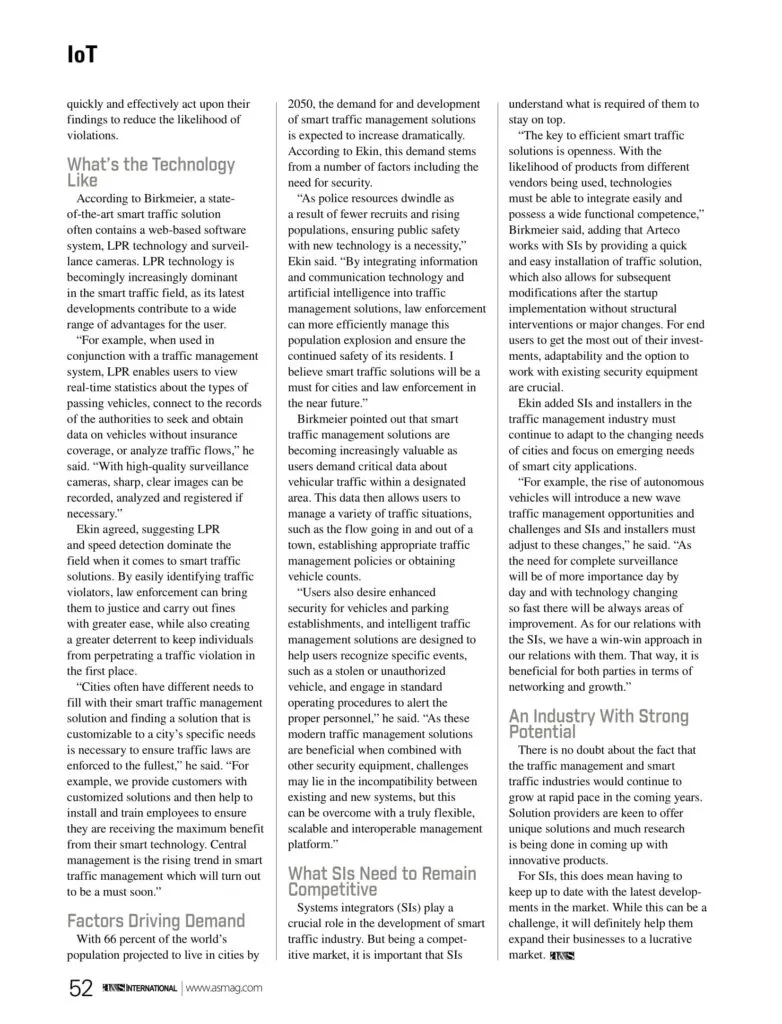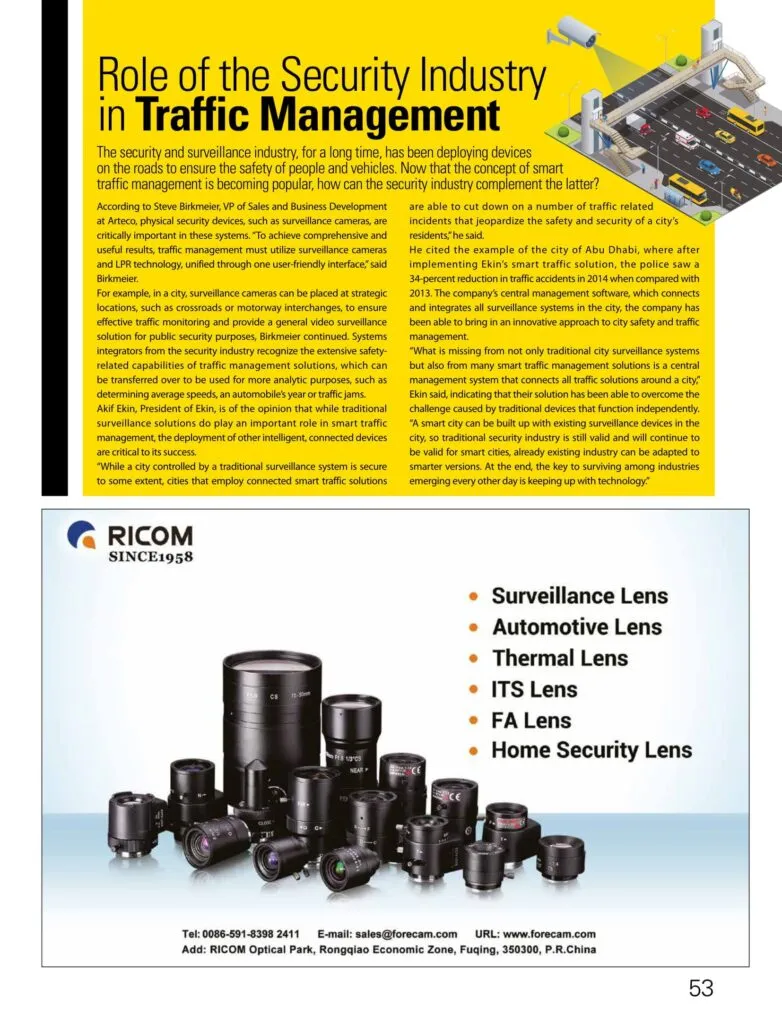What’s Cooking in the Smart Traffic Industry?
Officer.com / asmag.com / 01.05.2018
What’s Cooking in the Smart Traffic Industry?
On the Current Trends Being Seen
Akif Ekin, President of the safe cities solution provider Ekin, pointed out that the Consumer Technology Association projects global spending on smart cities will reach $34.35 billion by 2020, as more cities seek proactive solutions to longstanding issues, such as traffic.
“Traffic management is a central component to smart city development and the technology that supports it will continue to dominate the future of the industry,” Ekin said. Law enforcement agencies tasked with managing traffic flow and safety are seeking more proactive solutions that prevent traffic issues before they happen.”
For example, automatic license plate readers reduce the time and headache of identifying violators who disrupt the flow of traffic, Ekin added. When this technology is coupled with solutions that offer mobility and citywide connectivity, such as our line of safe city technologies, law enforcement has the ability to not only detect a violation but also can quickly and effectively act upon their findings to reduce the likelihood of violations.
On the Technology
Ekin suggested that automatic license plate readers and speed detection dominate the field when it comes to smart traffic solutions. By easily identifying traffic violators, law enforcement can bring them to justice and carry out fines with greater ease, while also creating a greater deterrent to keep individuals from perpetrating a traffic violation in the first place.
“Cities often have different needs to fill with their smart traffic management solution and finding a solution that is customizable to a city’s specific needs is necessary to ensure traffic laws are enforced to the fullest,” he said. “For example, we provide customers with customized solutions and then help to install and train employees to ensure they are receiving the maximum benefit from their smart technology. Central management is the rising trend in smart traffic management which will turn out to be a must soon.”
On Factors Driving Demand
With 66 percent of the world’s population projected to live in cities by 2050, the demand for and development of smart traffic management solutions is expected to increase dramatically. According to Ekin, this demand stems from a number of factors including the need for security.
“As police resources dwindle as a result of fewer recruits and rising populations, ensuring public safety with new technology is a necessity,” Ekin said. “By integrating information and communication technology and artificial intelligence into traffic management solutions, law enforcement can more efficiently manage this population explosion and ensure the continued safety of its residents. I believe smart traffic solutions will be a must for cities and law enforcement in the near future.”
On What SIs Should Do to Remain Competitive
Ekin further pointed out that SI and installers in the traffic management industry must continue to adapt to the changing needs of cities and focus on emerging needs of smart city applications.
“For example, the rise of autonomous vehicles will introduce a new wave traffic management opportunities and challenges and SI’s and installers must adjust to these changes,” he said. “As the need for complete surveillance will be of more importance day by day and with technology changing so fast there will be always areas of improvement. As for our relations with the system integrators, we have a win-win approach in our relations with them. That way, it is beneficial for both parties in terms of networking and growth.”
On the Security Industry and Traffic Management Solutions
Ekin is of the opinion that while traditional surveillance solutions do play an important role in smart traffic management, the deployment of other intelligent, connected devices are critical to its success.
“While a city controlled by a traditional surveillance system is secure to some extent, cities that employ connected smart traffic solutions are able to cut down on a number of traffic related incidents that jeopardize the safety and security of a city’s residents,” he said.
He cited the example of the city of Abu Dhabi, where after implementing Ekin’s smart traffic solution, the police saw a 34 percent reduction in traffic accidents in 2014 when compared with 2013. The company’s central management software, which connects and integrates all surveillance systems in the city, the company has been able to bring in an innovative approach to city safety and traffic management.
“What is missing from not only traditional city surveillance systems but also from many smart traffic management solutions is a central management system that connects all traffic solutions around a city,” Ekin said, indicating that their solution has been able to overcome the challenge caused by traditional devices that function independently. “A smart city can be build up with existing surveillance devices in the city, so traditional security industry is still valid and will continue to be valid for smart cities, already existing industry can be adapted to smarter versions. At the end, the key to survive among industries emerging every other day is keeping up with technology.”





